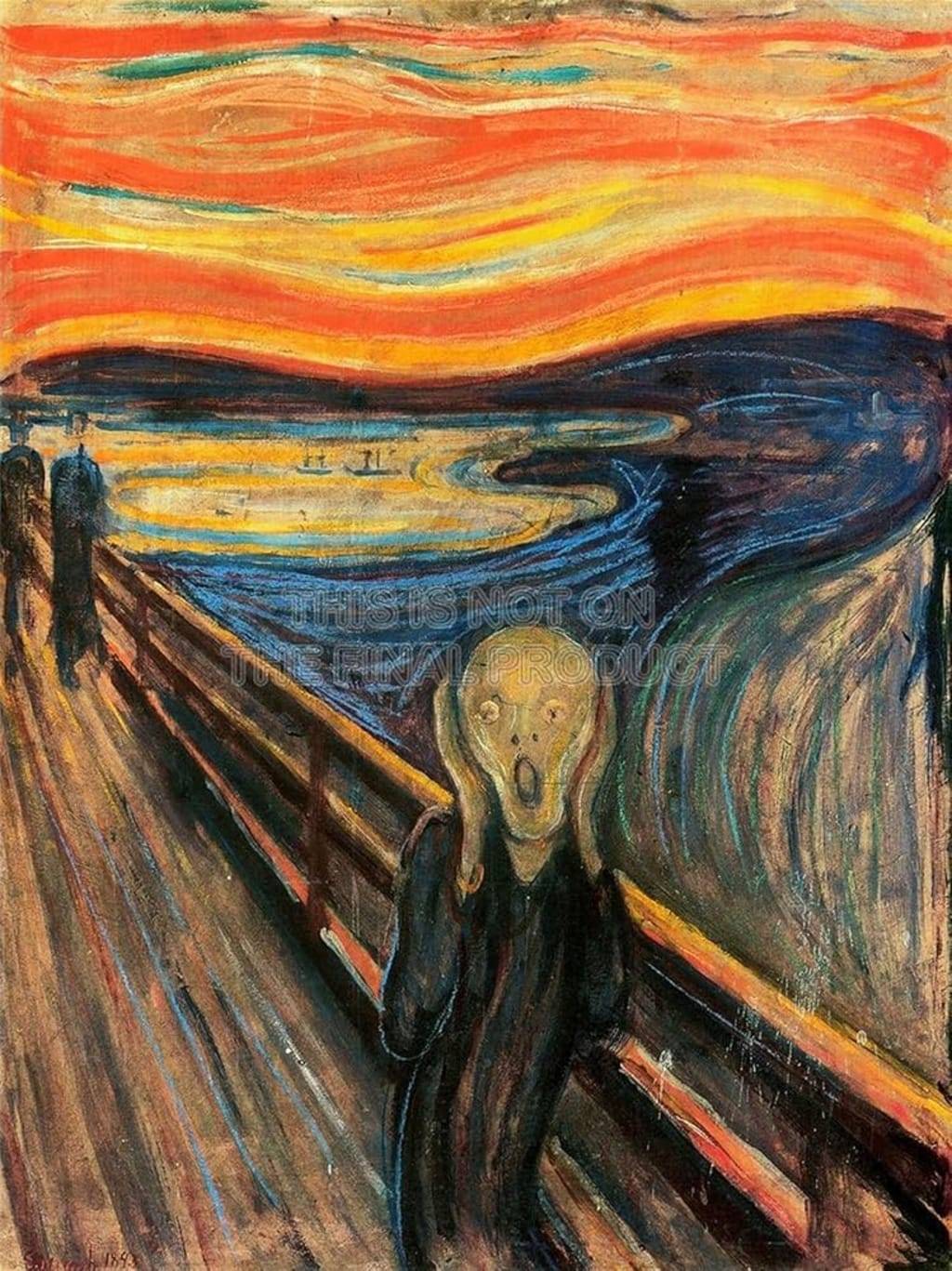The Scream: A Haunting Echo of the Human Soul
I remember the first time I saw The Scream. I was maybe 16, flipping through an art history book in my high school library, bored out of my mind. Then—bam—there it was. That wild, wavy figure, hands cupped around its face, mouth open in this primal, silent wail. It stopped me cold. Why did this painting, created over a century ago, feel like it was screaming at me? Like it knew something about my teenage angst, my late-night worries, that I hadn’t even admitted to myself.
Edvard Munch’s The Scream isn’t just a painting. It’s a raw nerve, a snapshot of what it feels to be human and overwhelmed. You’ve probably seen it plastered on coffee mugs or memes, but there’s something about standing in front of it—or even just staring at a print—that makes your stomach twist. It’s not just art. It’s a mirror.
There’s this quiet thrill in knowing Munch didn’t plan this masterpiece in some sterile studio. He was out walking in Oslo, the sky burning red, when he felt it—a “great, infinite scream pass through nature,†as he wrote in his diary. Can you imagine that? You’re just strolling along, maybe thinking about dinner, and the universe hits you with this gut-punch of existential dread. That’s what he poured onto the canvas. The colors—those fiery oranges, sickly greens, deep blues—they swirl like a fever dream. The figure, neither man nor woman, could be anyone. Could be you. Could be me.
I think that’s what gets me most: the universality of it. We’ve all had moments where the world feels too loud, too heavy. Like when you’re stuck in traffic, late for something important, and your phone won’t stop buzzing. Or when you’re lying awake at 3 a.m., wondering if you’re doing life wrong. Munch’s figure isn’t just screaming—it’s frozen in that moment when everything inside you wants to break free, but you’re stuck, silent, on a bridge to nowhere.
Take a look at the painting’s background. That fjord, the twisting sky—it’s almost alive, isn’t it? Munch wasn’t just painting a person; he was painting a feeling. He used those wild, wavy lines to make the world itself seem unsteady, like it’s vibrating with the same anxiety as the figure. I read somewhere that Munch was inspired by a sunset, but also by his own struggles—his sister’s mental illness, his own fears of losing his grip. And, you know, that makes it hit harder. This isn’t some abstract concept. It’s personal. It’s real.
I once stood in front of one of the versions of The Scream at a museum in New York. The crowd was shuffling by, snapping selfies, but I just… stopped. I couldn’t move. The figure’s eyes—those hollow, wide ovals—seemed to lock onto mine. I wondered what Munch would think of us now, all these years later, still staring at his scream. Would he be surprised that we’re still so anxious? Or would he just nod, like, “Yeah, I get it. Nothing’s changed.â€
There’s something almost rebellious about how Munch painted this. Back in the 1890s, when most artists were still obsessed with realism or pretty landscapes, he went rogue. He didn’t care about perfect proportions or soft colors. He wanted to make you feel something. And boy, does he. The painting’s not perfect—it’s raw, jagged, almost messy. But that’s why it works. It’s not trying to be anything it’s not.
So, what is it about The Scream that keeps us coming back? Maybe it’s because we’re all a little like that figure sometimes, standing on our own bridges, feeling the weight of the world. Maybe it’s a reminder that it’s okay to feel overwhelmed, to let out a silent scream of your own. Or maybe it’s just that Munch tapped into something timeless—a piece of what it means to be human. I don’t know. What do you think? Next time you see that iconic face, will you see a painting… or will you see yourself?


